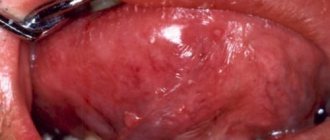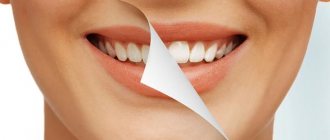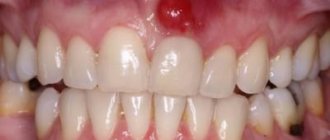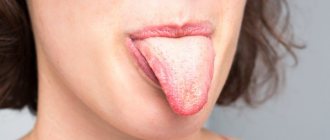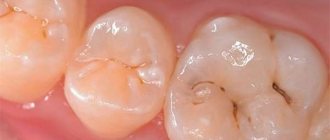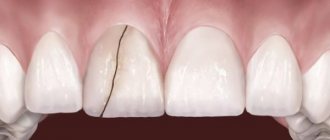Gums turned white: possible reasons
There are many causes of white gums. The main reasons are as follows.
- Stomatitis. This inflammatory disease of the gum mucosa most often occurs in young children. Stomatitis is not a dangerous disease. But it causes very unpleasant symptoms. The white color of the gums with stomatitis is caused by the gray-white shade of purulent plaque that covers it. Later, painful ulcers appear from the white coating on the gums. Ulcers cause a lot of suffering during hygiene procedures and when eating. In severe cases of stomatitis, total damage to the mucous membrane is possible, which will be accompanied by high fever. The main treatment is rinsing the mouth with special solutions and lubricating the ulcers with medicinal ointments. Diet is of great importance. You should not eat salty, spicy, sour foods.
- Candidiasis or thrush. This is a fungal disease that can affect both children and adults. Most often, adults develop thrush after taking antibiotics. Taking antibiotics changes the microflora of the body. This leads to the growth of fungal cultures. Therefore, when prescribing any antibiotic, the doctor must prescribe an antifungal drug. Thrush can accompany more serious illnesses. Candidiasis often occurs with diabetes mellitus and HIV infection. Therefore, when you see that your gums are white, it is important not to self-medicate, but to make a diagnosis in time.
- If your gums are white, it may be a result of recent teeth whitening. During the whitening procedure, the bleaching agent may get on your gums. If after this the gums remain smooth and do not hurt, then there is no reason to worry.
Classification of stomatitis
As a rule, white spots on the gums and the entire oral cavity are the most common manifestations of a disease such as stomatitis.
- Candidiasis or fungal stomatitis can occur in various forms. For example, in mild, acute, chronic, recurrent. A distinctive feature of this type of disease is its almost imperceptible course, since with fungal stomatitis there are almost no inflammatory reactions and hyperthermia. Plaques and spots on the gums in this case may vary in color. So they come in white, milky, grayish and a color reminiscent of cottage cheese. During this pathology, the child becomes overly capricious and irritable, eats poorly due to the soreness of the lesions in the oral cavity. In addition to pain, the mouth may experience burning, itching and dryness. In the early stages of the disease, stomatitis appears as white spots on the inner surface of the lip, tongue, cheeks and gums, and after that the plaque becomes a continuous film and resembles a white stripe.
- Herpetic stomatitis is a type of this disease or its transitional stage. When examining the oral cavity, you can detect redness of the mucous membranes and the appearance of light-colored blisters, which subsequently burst and form ulcers, abscesses and cracks on the child’s oral mucosa and gums. After recovery, the mucous membrane acquires a characteristic marble pattern.
In the acute course of this disease, an increase in temperature, as a result of the inflammatory reaction, and enlargement of the lymph nodes may occur. Inflammation is accompanied by swelling of the gums, tongue and dry mouth. In mild cases of this disease, there are about 3-6 balls on the gums, which are treated with non-steroidal anti-inflammatory drugs.
- Aphthous stomatitis is the most complex, since the causes of its occurrence are not precisely known. It is generally accepted that it occurs due to a disturbance in homeostasis, namely a failure in the normal functioning of the gastrointestinal tract. The symptoms of this disease are more similar to herpetic stomatitis, but after the formation of ulcers they acquire smooth edges and become whitish in color. After covering with this cloudy film, a secondary infection may occur due to its rupture. In such cases, the treatment process may become difficult.
Preventing gum disease
It takes very little effort to keep your gums healthy. Regular oral hygiene procedures are of great importance. Food must contain essential vitamins and microelements. It is necessary to avoid injury to the gum mucosa. Regular examination of the oral cavity by a dentist is necessary.
White gums can be a symptom of many diseases. These diseases are usually easy to treat. But, in any case, if the gums turn white, a doctor must make a diagnosis and prescribe treatment. Therefore, it is so important to seek qualified help in a timely manner.
vitaportal.ru
Causes of white spots in adults
The formation of spots on the gums in an adult indicates disorders in the body and the oral cavity itself. The main reasons for the appearance of a white spot on the gums in adults include:
- poor oral hygiene;
- deficiency of minerals in the body (especially Ca);
- multiple injuries (temperature, mechanical and chemical irritants);
- inflammatory and infectious diseases of the oral mucosa;
- viral diseases (herpes);
- benign formations (cysts, wen);
- cancerous tumors.
Only a dentist can determine the exact cause of white spots based on diagnostic examinations.
Causes of inflammation
The mouth is home to millions of bacteria. In the normal state of the body, the microflora of the oral cavity does not impair the quality of hard and soft tissues.
Under certain conditions, the composition of saliva changes and the number of bacteria increases. The penetration of infection is a catalyst for negative changes in the oral cavity, the cause of an increase in the volume of soft and hard plaque, and the development of the inflammatory process.
Provoking factors:
- decreased immune defense;
- not taking hygiene procedures seriously;
- improper diet, deficiency of vitamins and minerals;
- long-term smoking experience;
- pregnancy, menopause;
- taking hormonal pills;
- hereditary predisposition;
- accumulation of mineralized tartar.
Sometimes the gums become inflamed around the wisdom tooth. The eruption of third molars is often difficult. This results in inflammation of the gum tissue, aching pain, and swelling. Contact your dentist: the doctor will tell you how to proceed. (Read more about wisdom tooth eruption on this page.)
When do children's baby teeth fall out and in what order? Find out all about the features of the process.
Read about the benefits and cost of installing sapphire braces to correct your malocclusion at this address.
What happens if you don’t remove plaque from your teeth in time?
Scientists who have studied the impact of untreated plaque on the overall health of the body have found that maintaining good oral care is directly related to the prevention of potential cardiovascular disease. Hard bacterial deposits remaining around the teeth for a long time cause gum infection, inflammation and chronic periodontitis. Microorganisms that cause periodontitis and gum disease are able to disseminate over time from the tissues of the oral cavity directly into the integumentary lining (the so-called endothelium) of blood vessels. As a result, the risk of developing atherosclerosis, myocardial infarction, ischemia and other diseases usually associated with serious thromboembolic conditions increases.
Gum diseases
Research published in 1998 showed that bacteria living in dental plaque significantly stimulate platelet aggregation, a phenomenon characteristic of most fatal diseases of the heart and blood vessels.
Platelet aggregation
It should be borne in mind that tartar can cause problems not only in the oral cavity, but also far beyond it, and carry potential risks to health and life. This is why regular preventive examinations and professional oral hygiene, as well as self-care of teeth and gums, are so important.
Symptoms
Inflammation of the gingival tissue near the tooth is easy to notice soon after the onset of the pathological process:
- the affected area turns red and swells slightly;
- when pressed, when eating, pain is felt;
- during morning and evening hygiene procedures, blood bleeds from the inflamed gums;
- when biting into a sore spot on hard foods, the pain intensifies;
- over time, the edge of the gum slightly moves away from the dental tissue, exposing the neck of the tooth;
- in severe cases, pus accumulates in the periodontal pocket, and sometimes the temperature rises.
Fistula as a consequence of periodontitis
When periodontal tissues are damaged by inflammation, the integrity of the gums is compromised; it moves away from the neck of the tooth, forming voids in dental pockets.
We invite you to read: Experts will tell you how to quickly relieve toothache at home in adults
The cavities are colonized by bacteria, filled with pus, for the exit of which a channel is formed - a fistula.
At first it looks like a white spot hanging over the tooth, then the painful plaque on the gum increases and shoots out the accumulated purulent contents. Fistula is treated by surgical cleaning of the cavity followed by antibiotics.
Interesting and useful information
Dental diseases are links in one chain. The difference is in the strength of the inflammatory process and the affected area. The lack of timely treatment provokes the transition of a mild form of inflammation to a severe one, affecting not only the gums, but also the root of the tooth.
Features of inflammatory gum diseases:
- gingivitis is the initial stage of pathological changes. Pathogenic microorganisms penetrate wounds, microcracks, and provoke inflammation. The gums swell slightly, mild pain appears, and when cleaning the teeth or eating solid foods, slight bleeding occurs; (Folk methods for treating gingivitis at home are described in this article);
- periodontitis is the next stage of the inflammatory process of gum tissue. If left untreated, the signs characteristic of gingivitis become pronounced. “Pockets” of different widths with purulent contents form near the teeth, mobility of the dentition develops, and the tooth root is exposed. The pain intensifies, the temperature often rises;
- periodontitis. Severe form of the inflammatory process. Extensive pathological changes cover one, two or more teeth. A purulent focus appears at the apex of the root. The pain intensifies, redness and swelling interfere with talking, eating, and brushing your teeth. Flux often develops - inflammation of the periosteum, accompanied by a large volume of exudate and severe swelling of the gums. (How to remove swelling due to flux is written at this address).
Treatment of the initial stage of gingivitis will prevent the development of severe forms of the pathological process in the gums and will preserve periodontal health. Pay attention to the slightest changes in the surface of the soft tissues; do not delay a visit to the dentist if characteristic symptoms are noticeable. (Read more about the symptoms of gum inflammation at this address).
Causes and symptoms of periodontitis
Inflammation of the periodontium, the tissue that supports the tooth, often leads to swelling of the gums. This condition may be caused by the following reasons:
- Penetration of infection into bone tissue through the dental canal. This usually happens when caries is left untreated.
- Transfer of inflammation from other organs. This is possible with throat diseases or sinusitis.
- Damage to the periodontium as a result of a sharp physical impact, such as a blow to or near a tooth.
- Penetration of irritating substances into the periodontium. This is possible due to improper or unskilled dental treatment.
- An immunological reaction as a consequence of an allergy. Quite a rare occurrence.
Methods and rules of treatment
How to treat gum inflammation? The main thing is not to turn a blind eye to the first symptoms. At first, try to do it on your own.
With slight redness and mild pain, simple steps will help:
- rinse your mouth with a decoction made from equal parts of sage and chamomile. If you have oak bark at home, add that too;
- proportions: half a liter of hot water, 3 dec. l. healing collection. Keep the healthy mixture on low heat for ten minutes, then set aside. Wait for the healing liquid to cool, filter;
- the decoction has active astringent properties and perfectly relieves inflammation;
Medicines
In case of severe inflammation of the periodontal tissue, rinsing is recommended. Treat affected areas 2-3 times a day.
How to rinse your mouth for gum inflammation? Effective solutions:
- Chlorhexidine 0.05%.
- Furacilin.
- Miramistin 0.01%.
With the active development of the inflammatory process, the doctor will prescribe therapeutic applications using the following drugs:
- Metronidazole.
- Sangviritrina.
- Befengina.
In case of severe inflammation or the spread of a bacterial or fungal infection, the dentist will prescribe medications to treat a specific disease. In serious cases, potent drugs are needed. After an antibiotic sensitivity test, the doctor will select the most effective medication.
How to relieve gum inflammation? Therapy:
- with gingivitis. Solutions – Stomatofit, Rotokan, Miramistin, gel for gum inflammation Gialudent, Asepta;
- with periodontitis. A course of antibiotics for gum inflammation, Rotokan, Cholorophyllipt, Metrogyl denta, Cholisal. Physiotherapy, applications with bee venom. Curettage of “pockets” with purulent fluid; (Read more about taking antibiotics for gum disease in this article).
- periodontitis. Antibacterial therapy (fluoroquinolones, tetracyclines), solution of Chloramine, Chlorhexidine, hydrogen peroxide 3%. Filling the space under the temporary filling with an anti-inflammatory composition. Effective: Apexit, Metapex, Crezofen, Vitapex.
Folk remedies and recipes
Supplement antibacterial therapy and medicinal rinses with homemade recipes. Not only solutions of medications, but also decoctions of medicinal herbs are suitable for treating inflamed tissues.
Proven recipes:
- chamomile plus calendula. Take 1 dess. l. each herb, combine, take a tablespoon of the mixture, add 250 ml of boiling water. Infuse the healing composition in a jar or thermos. After forty minutes, filter the product and use for rinsing;
- chamomile plus oak bark. The proportions are the same as in the previous recipe. Difference: simmer the product over low heat for a quarter of an hour. Filter the cooled broth and use it to treat the affected areas;
- sage decoction. An effective remedy for redness and swelling of the gums. For a glass of boiling water - a tablespoon of herbs. After 30 minutes, the folk remedy for rinsing is ready. Strain, apply 4-5 times a day;
- aloe juice Squeeze the healing liquid from the crushed pulp. Treat the inflamed area three times a day;
- Kalanchoe juice. Prepare a paste from several leaves and squeeze out the juice. Lubricate the affected areas morning, afternoon and evening;
- tincture of calendula. When the inflammatory process activates, prepare a solution: you will need a glass of warm water + a teaspoon of calendula alcohol tincture;
- soda solution. Another proven anti-inflammatory remedy. Heat the water slightly (250 ml), add a teaspoon of soda, stir, wait until the grains dissolve. Four to five rinses per day are enough to reduce redness, swelling, and relieve pain.
Do not replace traditional recipes with drug treatment. Herbal decoctions and soda solution can easily cope with the pathological process at an early stage, but for periodontitis and periodontitis, medicinal gels, solutions of medications, and antibiotics are required.
How and how to cure stomatitis in the mouth of adults? We have the answer!
Read about the installation features and cost of invisible lingual braces in this article.
Follow the link https://u-zubnogo.com/articles/protsedury/shinirovanie.html and find out more about the procedure for splinting teeth to strengthen them.
Prevention of occurrence
The most important factor in preventing the formation of white plaque in the oral cavity, which threatens to later become tartar, is careful attention to hygiene and timely care of teeth and gums.
- Timely brushing of teeth and rinsing the mouth after meals, as well as a properly selected toothbrush and toothpaste, greatly reduce the risk of unpleasant symptoms. It is important to follow the mechanics of movements when brushing, working on hard-to-reach areas of the teeth and gums, and if necessary, use dental floss.
- Extracts and decoctions of herbs such as mint, sage, chamomile, and thyme will help to gently but effectively influence bacteria. You can prepare them yourself by purchasing dry substrates at the pharmacy, or use ready-made rinses produced by various companies.
- A review of your diet, giving up bad habits, and reducing your coffee and strong tea consumption will also have a positive effect.
Preventive measures
It is easier to prevent dangerous dental diseases than to eliminate inflammation of the gum tissue. Combating severe inflammation in periodontal tissues is even more difficult (and more expensive).
Simple preventive measures minimize the risk of relapses and prevent the development of inflammatory processes in the periodontal tissue. If you have encountered an unpleasant phenomenon in the oral cavity or do not want to learn from your own example what inflammation of the gums is, carefully study the recommendations of dentists.
The rules are simple:
- visit the dentist twice a year;
- properly and regularly clean your mouth of food debris;
- use pharmaceutical rinses, prepare herbal decoctions;
- remove tartar once a year if mineralized hard plaque covers the surface of the tooth;
- be careful with sharp objects, chips, crackers, which can easily injure the gums;
- less sweets, baked goods, which form a soft plaque, and sweet soda, which destroys teeth.
Medical video - reference book. A few more proven folk recipes for treating inflammation of the gums around the tooth at home:
u-zubnogo.com
Periodontal abscess
Sometimes, when examining the problem area, it is clear that the gum is not completely swollen, but there is a semicircular formation, often pale in color. By comparing the appearance of the tumor with a classic photo of an abscess, you can easily identify it.
There are many reasons for the occurrence of an abscess, but it usually occurs during periodontitis, when pus cannot break through the area of inflammation for a long time. Also, local inflammation can be caused by a festering deep wound on the inside or outside of the gum.
A diagnosis of an abscess is made with the following symptoms:
- Periodontal abscess
there is a characteristic semicircular formation with an elastic, stressed surface;
- red swelling of the surrounding soft tissue;
- when pressed, fluid movement inside the inflammation zone is felt - a symptom of fluctuation;
- the cheek was swollen and the palate was swollen;
- temperature rise is possible.
Treatment of an abscess is carried out by opening the abscess and prescribing a number of analgesic and anti-inflammatory drugs. The procedure itself is not too complicated and painful (taking into account anesthesia), but you cannot do it yourself at home. This is due to the need for high-quality disinfection of the resulting wound. The doctor must also determine the cause of the accumulation of pus and, if periodontitis or periodontitis is detected, treat it.
If treatment is delayed or after it is carried out unqualifiedly (on your own in unsanitary conditions), complications may develop. The formation of phlegmon as a result of pus breaking through the skin or into the intermuscular space will lead to the need for a serious surgical operation, including removal of pus through facial incisions on the outside.
White plaque on the gums of an adult - the main causes
- Exposure to chemical compounds during bleaching.
If the gums do not bleed, hurt or swell, over time the white plaque will go away and the tissue will return to its normal appearance. But you need to inform the doctor who performed the bleaching about the presence of stains.
- Thermal impact
White spots may occur after touching a hot cup or drinking hot food or drinks.
- Poor oral hygiene.
If you don’t brush your teeth for several days, or do it poorly, plaque can form on your gums. The layer can be easily brushed off, after which you should rinse your mouth thoroughly.
- Lack of calcium in the body.
With a balanced diet and saturation of the body with calcium, the problem may go away on its own. In any case, consultation with a dentist is required.
- Neoplasms
White spots in the form of bubbles on the gum tissue are fatty tumors that are considered benign. They themselves are not dangerous, but at some point they may increase in size, and here you may need to consult an oncologist.
Have you noticed white gums? Seek advice from an experienced dentist who will examine the oral cavity, make an accurate diagnosis and prescribe adequate treatment. You can make an appointment with a doctor here.
First aid
If the gums around a wisdom tooth are swollen, but for some reason you can’t get an appointment with a dentist, you can give yourself first aid. Let's look at how to relieve symptoms on your own.
Let’s say right away that self-treatment is not a substitute for examination and appointments by a dentist. This is just a temporary solution to the problem.
Severe pain can be eliminated with painkillers: Tempalgin, Nise, Dexalgin. Before using any medicine, read the instructions.
Anti-inflammatory ointments will also help: Cholisal, tetracycline, Metrogyl Denta. You can also relieve inflammation with the help of “Stomatofit” or “Chlorophyllipt” solutions, “Tantum Verde” spray.
When the gums are very swollen, you need to apply applications (lotions, compresses) using the listed anti-inflammatory ointments and solutions. We also suggest using non-steroidal drugs that suppress inflammation, pain and fever: Ibuprofen, Diclofenac.
White plaque on the teeth near the gums is a sign of serious diseases
- Tooth cyst. The presence of a whitish pimple on the gum indicates an inflamed abscess in the area of the tooth root. An x-ray taken by a dentist will help confirm or rule out the disease.
- Periodontitis. A light spot on the gum tissue may indicate the presence of a fistula with purulent contents.
- Stomatitis or inflammation of the mucous membrane. Very common in children under one year of age. In this case, gray-whitish abscesses with ulcerations form on the gums. They open when simply brushing your teeth or eating solid food. In severe forms, the condition is accompanied by chills, fever, and the inability to eat or drink drinks. To cure white formations on the gums, and most importantly, stomatitis, experts recommend rinsing the mouth, lubricating the gums with ointments, solutions, and following a diet. If you have ulcers, you should not eat salty, spicy, or sour foods.
- Fungal diseases (thrush, candidiasis, candidiasis, etc.). These problems most often occur in women and children. Sometimes they can be caused by a course of antibiotics, which negatively affects the microflora. Fungal cultures spread throughout the body very quickly. With candidiasis and other fungal infections, there are more than 10 visible white spots on the gums.
- Also, a white spot on the gum may hurt due to diabetes or HIV infection. In this case, you will need to consult a dentist, endocrinologist and immunologist.
If you see a white spot or several light halos, ulcers, or pimples on your gum, consult your dentist immediately. You may need to consult related specialists to exclude or confirm the diagnosis.
White gums: causes, treatment, preventive measures
A person's gums turn white - this is a clear signal that needs to be paid attention to.
If you notice this symptom, you should immediately seek qualified help from a doctor who can diagnose the root causes of the appearance of white color and prescribe appropriate treatment. White gum - leukoplakia in a child
The main reasons for the appearance
| Reason name | Symptoms |
| Neoplasms | If white spots appear on the gums of adults near a tooth, it is quite possible that these are wen, which are also considered benign. They do not pose a danger to humans, but if they are not treated, the wen may begin to increase in size, and then the person will need the services of oncologists. |
| Lack of vitamins (calcium) and minerals in the body | Whitening of the gums can also occur due to hypovitaminosis. If you start to carefully monitor your diet and additionally saturate your body with foods with high levels of calcium, then the problem will go away on its own. But even in this case, you need to go to the dentist. |
| Violation of hygiene rules | If you do not keep your mouth clean for several days or brush your teeth poorly, then whitened gums are the result of poor hygiene. White plaque near the tooth and on the gums must be cleaned off with a toothbrush, but the entire procedure must be done very carefully so as not to damage the tissue. After this, you need to thoroughly rinse your mouth with special rinses that “fix” the result. |
| Thermal effects | The gums become covered with white spots if you drink something too hot (tea, coffee) or eat too hot food. |
| Whitening | The whole process significantly affects the general condition of the oral cavity, so it is quite possible that after whitening some areas of the gums may turn white. If during this the gums do not bleed or swell, then you need to wait a little and the problem will disappear, that is, the gums will acquire a normal color. But as soon as you observe this phenomenon, immediately inform your dentist who performed the procedure. |
| Stomatitis | This is not a very dangerous, but discomforting disease that develops less often in adults than in children. As soon as you see whitened gums or a pale grayish-white coating on your child, then it is quite possible that this is stomatitis. Caused by poor oral hygiene. As soon as this is discovered, you immediately need to begin complex treatment consisting of a specialized diet (at this time you should not eat spicy, overly salty or sour foods), plus the affected areas are treated with ointments (the doctor or pharmacist at the pharmacy will tell you which ones). It is also recommended to additionally rinse the oral cavity with solutions (can be herbal), then the whitened part of the tissue will begin to return to its usual color, and the purulent plaque will simply be removed. |
| Cyst | If a small white lump appears in the area of the tooth, then it could be a cyst, because one of its symptoms is an abscess. To treat this disease, X-ray diagnostics is necessary. For some reason, people do not pay special attention to such seemingly insignificant symptoms, although in the end they bring many negative consequences. Alternatively, this could be tooth extraction. |
| Candidiasis or thrush | This disease is characterized by pale gums, which become so due to the fact that the body does not have enough vitamins, so the immune system weakens. Thrush can affect both adults (usually women) and their children. They can occur after taking antibiotics, which have a strong effect on the microflora of the body. The gums around the tooth also turn white due to the fact that harmful microorganisms of fungal cultures actively multiply in the oral cavity. |
| Periodontitis | The white dot in this case will be a fistula, with the help of which pus comes out of the gums. |
| Diabetes or HIV | If the reason that your gums have become paler or completely white is that your body suffers from these diseases, then you need to seek help not only from a dentist; in such situations, it would not be superfluous to have an additional consultation with a doctor - an immunologist and an endocrinologist. They will give clear instructions on what type of treatment is suitable for a patient with special requirements. |
What to do in a situation where white spots appear on the gums after removal?
Teeth are an important component of the digestive tract, so when they start to hurt, a person is simply not able to endure this exhausting and unpleasant pain for a long time. If, after the doctor has removed a tooth, and the patient notices a change in the color of the gums, it becomes pale and then completely white, this can only reflect one thing, an inflammatory process begins in the body.
Abscess on the root of a tooth
- Which is also characterized by the fact that some areas near the tooth acquire a red tint.
- Grayish plaque, which can be diagnosed as white areas on the gums. The inflammatory process is a signal of the presence of complications that simply need to be prevented, with minimal losses.
Dentists, in cases where a patient has unnaturally pale gums, suggest undergoing examinations, including:
- Initial visual inspection.
- If necessary, he gives a referral for radiography and computed tomography.
- To exclude/identify viral diseases, blood is taken for clinical and general analysis.
Periodontitis of the gums causes them to become white and red.
Once the diagnosis is established, the doctor will completely prescribe the treatment.
In the most advanced situations, when it is simply impossible to save teeth, the patient is prescribed a surgical operation and the subsequent process of complete restoration.
Main nuances of treatment
If problems started after you whitened your teeth, then you can make an infusion of chamomile and rinse your mouth with this solution several times a day. To do this you need one glass of boiling water and a bag of chamomile. In a few days the plaque will disappear.
If a pale gray plaque appears in the baby during teething, then doctors advise using Kalgel.
If the cause is fungal diseases, then the following antifungal agents must be used: Clotrimazole, Pimafucin, etc. During this period, it is strongly recommended to exclude confectionery and sweets from your diet.
If the affected areas cannot be treated, but only removed, then laser removal is especially popular today. Doctors call it the radio wave method or electric knife surgery.
Diseases such as leukoplakia should not be treated using liquid nitrogen, as it can leave quite large and rough scars on the tissue. This is not the most pleasant from an aesthetic point of view.
As soon as the development of leukoplakia is suspected, then at that very time you need to make an appointment with a specialist.
More than 20 percent of people with oral cancer have previously been diagnosed with leukoplakia.
Regarding treatment, a comprehensive therapeutic approach is used. The first step is to completely eliminate the factors that are the direct causes of the disease.
If the patient has metal prostheses, these will also be removed, and the patient will need to quit smoking for the entire duration of treatment.
After the removal operation, the next step will be to prevent the development of inflammatory or infectious processes. Then comes the recovery period.
Leukoplakia is a precancerous condition
Preventive measures
Following standard procedures will help you prevent plaque from appearing on your gums.
- Careful observance of all hygiene measures: upon arrival from the street, after using the toilet, the first thing to do is wash your hands, especially for children who are not always willing to follow this step. But it is precisely because of this that stomatitis can begin to develop.
- Plus, rinse your mouth with rinses and, if necessary, use dental floss to clean your teeth.
- You cannot start taking antibiotics without a clear prescription from a doctor. After all, failure to follow the instructions correctly affects the immune system, and as a result, a white coating or small ulcers appear in the mouth.
- Pregnant women should treat candidiasis in a timely manner and with approved medications.
- Once a year, a medical examination is mandatory.
- Visit your doctor regularly, even in those moments when nothing bothers you.
White gum over growing wisdom tooth
All these simple precautions will help you avoid additional treatment of your teeth and gums.
Source: https://zubnoimir.ru/desna/pobelela.html
What to do if your gums turn white after tooth extraction?
This may indicate an inflammatory process. It is accompanied by redness of the tissues, while the holes are covered with a grayish coating, which looks like whitish areas. Inflammation can signal unwanted complications, which are important to prevent at the initial stage.
In most cases, white gums are an alarming symptom that should be examined by a dentist:
- conduct a visual inspection;
- perform radiography;
- do a computed tomography scan;
- refer the patient for a general and clinical blood test.
Depending on the diagnosis, comprehensive treatment should be prescribed. Local treatment may be required, and in advanced cases, surgical operations followed by a long recovery process.
100zubov.ru
Treatment
The treatment regimen for chalky stains on teeth is determined based on the true cause of their appearance.
Initial caries
For initial caries, a conservative approach to treatment is used, which involves maximum saturation of the affected areas of enamel with calcium. This can be achieved by using:
- special ionizers rich in calcium and fluorine;
- medications in which the concentration of substances necessary to restore enamel is greater than in toothpastes.
The treatment regimen for initial caries involves:
- removing plaque from teeth;
- the use of drugs that strengthen general immunity;
- compliance with the rules oral hygiene
- visiting the dentist to prevent relapse.
Children are advised to choose a special diet that includes fish oil and vitamin-rich foods.
Hypoplasia
For hypoplasia it is used:
- remineralization;
- fluoridation;
- silvering of teeth.
On this topic
- Stains
What do brown spots on teeth mean?
- Olga Alexandrovna Novikova
- August 11, 2020
Using appropriate medicinal compositions, the destruction process is stopped and damaged parts of the tooth are restored. It is possible to remove the consequences of hypoplasia by including drugs containing zinc, phosphorus and calcium in therapy.
The disease can be successfully treated in patients under 18 years of age. In other cases, a microprosthetics procedure or crown installation is required.
Fluorosis
Dental treatment for fluorosis includes:
- the use of medicinal applications that are applied to the surface of damaged teeth;
- electrophoresis;
- refusal to drink tap water in favor of filtered water;
- Avoid using toothpaste containing fluoride.
If fluorosis has led to partial tooth destruction, then corrective therapy is carried out, during which the damaged parts are restored with composite materials.
Braces
If the cause of the appearance of white spots is braces, then before starting treatment, the doctor changes the model of the orthodontic structure. To eliminate chalky spots, preparations containing fluorides are used for local remineralization. These procedures are carried out over a period of 6-10 weeks depending on the extent of the lesion.
The course of treatment is complemented by the use of toothpastes with a high fluoride content.
Injuries
The treatment regimen for problems arising as a result of injury depends on the nature of the injury. For minor damage, remineralization drugs are prescribed. In other situations, dental reconstruction is recommended.
Why do gums become inflamed?
The main reason is the appearance of bacteria on the teeth (in the form of plaque) and the further formation of tartar, which, in turn, irritates the gums. The gum tissue begins to recede from the tooth, and microbes and food debris accumulate in the resulting cracks, later turning into pus. If no measures are taken, there is a high probability of tooth loss.
We list the most common causes of gum inflammation:
- Bad habits (smoking)
- Improper brushing of teeth
- Impact of heavy metals (lead, bismuth, mercury) on the human body
- Lack of oral hygiene
- Tartar formation
- Inflammation associated with pregnancy
- Chronic diseases and pathologies of the endocrine system: Leukemia
- Diabetes
- Problems of internal organs
But it happens that the cause is mechanical injury (from the hard bristles of a toothbrush).
Development of gum inflammation
- The appearance of a bright red tint to the gum tissue. If you notice this symptom, it is recommended to contact your dentist.
- The appearance of bleeding when brushing teeth or biting on hard objects (apple, sandwich, etc.). Gum sensitivity increases, discomfort and pain when pressed.
- The inflamed gum swells, it moves away from the tooth, and pus accumulates in the resulting pockets, which causes an unpleasant odor.
- The last stage is tooth loss due to gum atrophy.
Causes
A white spot on the gum in the form of a ball, dot or shapeless blot often occurs due to injury or under the influence of infection.
Let's look at the common causes of ulcers on the gums, since treatment always depends on the diagnosis:
- Due to poor oral hygiene, pathological bacteria multiply wildly. As a result, bubbles or white spots appear on the gums.
- Lack of minerals in the human body, especially calcium.
- A spot on the gums after scaling and whitening procedures occurs as a result of exposure to chemicals or high temperatures.
- After damage to soft tissues with hard bristles of a brush, toothpick, or specific hard food.
- As a result of infectious gum diseases (stomatitis, candidiasis, periodontitis, periodontal disease, etc.).
- Manifestation of complications after surgical, endodontic, therapeutic dental treatment. A white pimple on the gum will indicate the development of an inflammatory process and the addition of an infection.
- Cystic formations.
- Various tumors can provoke the formation of lipomas (fat deposits). The formation looks like a white dot on the gum. As the wen grows in size, it resembles a ball.
- Sores on the gum or a change in its color may indicate the presence of a malignant tumor.
In fact, the list of ailments that provoke changes in the mucous membranes is much longer. Therefore, only a specialist can establish the correct diagnosis.
Types and symptoms of gum inflammation
- Spicy. This is the most common disease, the symptoms of which are:
- Redness of the gums
- Slight swelling
- The appearance of soft and hard plaque on teeth
- Bleeding when cleaning
- Chronic. There is practically no pain, the inflammation is sluggish, and is often detected only when visiting the dentist. Symptoms:
- Bleeding may occur when brushing teeth
- The appearance of an unpleasant odor
- There is slight redness of the gums
- Gingival papillae swell
- When exacerbation occurs, the gums become brightly colored, bleeding and swelling appear.
- Desquamative gingivitis. Redness becomes more intense, gingival epithelium peels off
- Simple marginal. It usually occurs in childhood due to lack of oral hygiene.
- Hyperplastic gingivitis. This type of inflammation is quite rare and occurs due to endocrine changes in the body. It most often affects teenagers, pregnant women and people with diabetes. Symptoms:
- Bleeding
- Appearance of pus
- Gums acquire a purplish-bluish tint
- The appearance of an unpleasant odor
- Tartar
- The appearance of false pathological pockets
- Ulcerative. Symptoms:
- Burning
- Severe itching
- Bleeding
- Gum tissue ulcers
- Atrophic. The main symptom is a decrease in gum tissue.
- Acute necrotizing ulcerative gingivitis. Pathology occurs due to bacterial infection. Symptoms:
- Inflammation of the oral mucosa
Bleeding
- Necrosis of interdental papillae
- The appearance of an unpleasant odor
People aged 17-30 years are susceptible to the disease due to poor oral hygiene. It may appear during acute respiratory infections, sore throat, flu, in patients with tuberculosis, AIDS, etc.
Complications of gum inflammation
- Periodontitis with further tooth loss
- Infection of the apical periodontium and jaw bones
- Worsening of the pathology to an ulcerative-necrotic state
- Hematogenous infections:
- Endocarditis
- Glomerulonephritis
How to treat sore gums
This depends on the severity of the disease and ranges from professional oral cleaning at a dental clinic to surgical intervention. If the inflammation is advanced and has reached a severe stage, treatment is carried out with antibiotics:
- Tetracycline
- Penicillin
- Metronidazole
- Clindamycin
- Ciprofloxacin
medspravochnaja.ru
The gums around the tooth are swollen and white spots appear
All changes in your body should not be left uncontrolled, as they can be signals about the onset of the disease or the course of the disease in a latent form. White spots on the gums of adults can occur for various reasons. For any illness, you need to see a doctor for timely treatment. Only a specialist can prescribe effective therapy against a specific disease.
Causes
Why do white spots appear on gums in adults? The mucous membrane may change color due to:
- stomatitis;
- candidiasis;
- leukoplakia;
- cysts.
If a white spot on the gum of an adult hurts, it is even more unpleasant, so the help of a doctor is required. This phenomenon also has other reasons:
- the appearance of a wen;
- fibrinous plaque after tooth extraction.
The appearance of a white spot on the gum can be accurately determined by its appearance and structure. In any case, treatment must be carried out under the supervision of a specialist.
Stomatitis
If the white spot on the gum has a dense coating that cannot be removed, then it is more likely that it is stomatitis, when the oral mucosa becomes inflamed. The mechanism of occurrence of the disease has not been reliably established, but most doctors attribute it to an immune reaction to irritants that affect the oral mucosa.
Lymphocytes attack unidentified particles, which is why first areas with a white coating appear in the mouth, and then painful ulcers in their place. Swelling of the mucous membrane is also observed. Hyperthermia and pain are likely to occur. \
White spots can appear from:
- bacterial or viral infection;
- mechanical damage to the mucosa;
- vitamin deficiency;
- poor quality or poorly installed dentures.
Due to stomatitis, salivation decreases: due to dehydration, taking specific medications, or excessive oral hygiene. Stomatitis requires treatment prescribed by a doctor, only then will you be able to get rid of unpleasant symptoms.
Candidiasis
If a white spot under the gum is easily removed with a cotton swab, but appears again after a while, then this is considered a sign of candidiasis. Candidiasis or thrush is a lesion of the mucous membrane by Candida fungi.
Fungal microorganisms of this kind are present in the normal microflora of the mouth, so the disease does not appear when they penetrate the mucous membrane, but when they multiply intensively. This is usually observed with reduced immunity or dysbacteriosis. Pathological proliferation of fungi is associated with:
- vitamin deficiency;
- decreased immunity due to severe illnesses, especially infectious ones;
- lack of iron;
- dysfunction of the endocrine system;
- dysbacteriosis of the oral cavity.
Candidiasis develops with a decrease in salivation and an increase in the acidity of saliva (this condition is noticed in many gastrointestinal ailments). This disease requires treatment to prevent complications.
Leukoplakia
If in adults the white spots on the gums are dense, have a milky tint, or are presented in the form of a cluster of small scales, then this is a sign of oral leukoplakia. It is not considered an independent disease; it is a syndrome in which thickening and keratinization of the epithelium of the mucous membrane occurs.
Leukoplakia appears as a reaction to aggressive factors:
- trauma to the mucous membrane from sharp teeth or poorly installed dentures;
- frequent long-term consumption of hot or spicy foods;
- smoking;
- prolonged exposure to harmful chemical components.
This syndrome also appears with a deficiency of vitamin A. The danger of leukoplakia is that it can turn into cancer if left untreated. The first sign of a malignant tumor is a graying and clouding of the white spot.
Cyst
This phenomenon is not always noticeable on the surface, but sometimes you can notice white spots on the teeth near the gums. A cyst is a formation in soft tissue. This is a cavity inside the gum, in the walls of which there are modified cells.
Usually there is pus in this cavity. A dental cyst occurs due to infection of soft tissues, as well as due to their pathological growths.
Wen
White spots on the gums of adults may indicate the appearance of a wen or lipoma. The spots may be yellowish in color. Wen is presented in the form of an accumulation of adipose tissue, which is surrounded by mucous walls.
These formations usually do not cause discomfort or pain. But with large sizes, the wen can interfere with chewing and articulation. It often occurs from mechanical injuries, for example, biting the cheek or rubbing with a brace or denture.
Fibrinous plaque
If a white spot appears on the gum after tooth extraction, the cause may be fibrinous plaque. But this is almost an isolated case when such a symptom does not indicate a disease, but the healing of a postoperative wound.
Fibrinous plaque is presented in the form of dead epithelial cells, which covers a new growing layer. No treatment is required; during healing, it disappears on its own without consequences.
Herpes infection
Many people have the herpes virus; often it does not manifest itself throughout life. It often affects children 3-5 years old. Herpes can be in acute and chronic form. The reasons for its occurrence are associated with poor hygiene and close contact with the carrier. In adults, the disease appears from stress, colds, weak immunity, and sudden changes in weather conditions.
Herpes infection manifests itself in the form of a small rash of white blisters, which can merge into a common lesion. It is not dangerous to humans and often disappears without any treatment. It should be borne in mind that after a single appearance, herpes can occur again, and usually in the same place.
At the first symptoms, you need to take medications, for example, Acyclovir. Herpes is often confused with stomatitis. But it affects the gums, and stomatitis begins to appear on the inside of the cheeks.
Poor quality care
Often whitish, yellowish spots on the gums occur due to poor oral care. They are considered normal plaque, which is not a pathological process. Due to the accumulated and multiplied pathogenic microorganisms, the healthy microflora of the oral cavity is disrupted.
It is necessary to rinse with medicinal plants or a warm soda solution after meals. It is important to brush your teeth regularly. If plaque builds up, it is necessary to use antibacterial rinses several times a day after meals. This restores a healthy environment in the mouth and protects against stains without medications or additional procedures.
Poor nutrition
Another reason for the appearance of white spots on the gums is considered to be a violation of the diet. Vitamin C deficiency can manifest itself in different ways, negatively affecting different organs, including the gums. Microcracks may appear on them, into which bacteria penetrate and lead to inflammation.
Nutrition should strengthen the immune system in order to accelerate regeneration in the body. The menu should consist of:
- cheese;
- cottage cheese;
- garlic;
- young beef;
- spinach;
- fish;
- fermented milk products.
Diagnostics
Only a doctor can determine the causes of white spots on the gums. The patient needs to talk about his feelings and events that preceded the appearance of this formation. Doctors usually visually identify the disease. But to clarify the diagnosis, you may need:
The appearance of white spots on the oral mucosa may not necessarily indicate a dental disease. The patient should visit an otolaryngologist to exclude or confirm an ENT disease.
How to treat?
Treatment for white spots on gums depends on the causes of their occurrence:
- For stomatitis, no special treatment is needed, you just need to maintain oral hygiene and follow a gentle diet (do not eat very hot, spicy, rough foods). If you eliminate irritants that provoke an immune reaction, stomatitis can be eliminated in a week.
- Candidiasis requires long-term and thorough therapy. It is necessary to sanitize the oral cavity and maintain hygiene. It is also important to reduce the acidity of the oral cavity - for this you need to rinse your mouth with solutions of baking soda, boric acid, clotrimazole. Antimycotics, fluconazole, teminafine, ketoconazole, amphotericin B, levorin are taken internally. Electrophoresis, ultraviolet irradiation, and laser therapy are effective among physical procedures.
- If a white spot appears on the gum and it is associated with leukoplakia, then serious treatment is needed. It is important to get rid of the factor that leads to irritation of the mucous membrane and causes its changes. It is necessary to eliminate smoking, adjust dentures, sharpen the edge of the tooth, and minimize contact with harmful components. Sanitation of the oral cavity and the use of applications with special agents (retinol, cigerol) that heal damaged mucosa are also necessary. If there is no effect of treatment, surgical intervention is necessary.
- If a white spot on the gum hurts, it may be due to a cyst or a wen. They are removed surgically. These formations are dangerous because the cystic cavities contain pus, which leads to an abscess and sometimes to inflammation of the bone. Wen tumors can gradually become malignant tumors. Therefore, both formations cannot be treated conservatively.
- As mentioned, fibrinous plaque does not need to be treated. Also, it should not be touched, as there is a risk of damage to the young epithelium growing underneath it.
What can you do at home?
Treatment can be performed at home, but only after consultation with a doctor. The patient receives a regimen to follow. What can you do before visiting a doctor? There are several recommendations that make the situation easier:
- Whatever the reason for the appearance of white spots, rinsing with an antiseptic solution will improve the condition. It is sold in pharmacies - “Chlorhexidine”, “Furacilin Eludril”, “Etonium”. But you can cook everything yourself. Add salt or soda (1 tsp) to warm water (1 glass). Everything gets mixed up. Rinse procedures can be performed every 2 hours. These measures stop the action of pathological microflora, reduce swelling, itching, and pain.
- You can make an infusion of beneficial herbs. Plants with anti-inflammatory, antiseptic, regenerating effects are needed. Sage, chamomile, calendula, and oak bark are suitable for this. The plants are suitable for brewing either separately or together. To prepare a healing solution, you need crushed herbs (2 tablespoons), which are poured with boiling water. The product is infused for several hours, after which it can be filtered and used for rinsing.
- Propolis has a powerful antibacterial and regenerating effect. For diseases of the mucous membrane, it is allowed to be taken. You can buy the tincture ready-made or make it yourself. To do this, 20 g of the product should be filled with alcohol (70%). After 3 days the product will be ready. Store it for a long time in the refrigerator. To prepare a solution for rinsing, you need to add the prepared tincture (2 tsp) to water (1 glass). The procedure is performed at least 5 times a day.
Experts believe that if white spots on the gums do not disappear on their own within a few days, then you should not self-medicate. Especially if other unpleasant phenomena occur with these symptoms.
Symptoms
The signs of gum inflammation, as well as the causes of the disease, depend on its form. The following symptoms are observed with gingivitis:
- the gums swell significantly and bleeding appears;
- body temperature rises;
- deposits appear on the enamel;
- there is an unpleasant odor from the oral cavity;
- proliferation of periodontal tissues, their death;
- change in gum color - it becomes dark red or acquires a blue tint;
- the spaces between the teeth are filled with overgrown gums;
- painful feelings when brushing teeth.
In turn, periodontitis is characterized by:
- loosening of teeth and bleeding of gum tissue;
- patients notice that the gum has moved away from the tooth;
- difficulty eating;
- exposure of the subgingival parts of the tooth;
- bad breath and pulsation in the periodontal tissues.
For periodontitis:
- severe and constant pain in the teeth, their gradual loosening;
- increase in gum tissue;
- swelling of lips and cheeks;
- in some cases, a hole (fistula) may appear on the gum. Through it, the products of purulence that occur inside the soft tissues are removed.
These diseases are very similar to each other and only a specialist can correctly distinguish them. Correct and timely diagnosis is the key to successful treatment.
Teething symptoms
A few weeks before the onset of such an important event in the life of not only the child, but the entire family, harbingers of beginning teething appear. Various symptoms that appear in the baby notify the mother that the first teeth will soon appear in the baby’s mouth.
The first thing a mother most often notices is her child’s frequent mood changes. The once calm and cheerful baby suddenly becomes capricious, sleeps and eats poorly. Or, on the contrary, it constantly “hangs” on the chest and fiddles with it. The baby puts everything that comes to hand into his mouth. There are children who do not stick their hands or even their feet out of their mouths. The reason for this behavior is clear: their gums, supported from the inside by their baby teeth, itch.
One of the symptoms indicating the imminent appearance of incisors is excessive salivation. Sometimes there is so much saliva that it bubbles and flows down the chin in small streams.
Doctors also note that many children are particularly bothered by a runny nose at this time. It is somewhat different from the common cold. It is not snot that flows from the nose, but a liquid similar to ordinary water. These discharges do not cause discomfort to the child.
Whitened gums indicate the imminent appearance of teeth. If you pull back your lip, you can see the outlines of small teeth visible under the gums. The gums themselves may be swollen. They seem to be inflamed. If a white stripe is visible over the gum, it means that in a couple of days the baby will have his first incisor.
The gum around the tooth is inflamed - what to do, how to treat it?
Therapy is carried out using medications, but the most important point is correct diagnosis, which can only be carried out by a doctor. To remove inflammation of the gums near the tooth with medications, you need to get specialist recommendations for effective treatment.
If inflammation is accompanied by pain, it is recommended to take painkillers: Analgin or Ketanov will help quickly stop the pain, and Paracetamol will relieve the temperature.
At the pharmacy you can also purchase a number of solutions and topical antibiotics that quickly relieve the main symptoms. These include:
- Miraslavin.
- Miramistin.
- Polyminerol.
Broad-spectrum antibiotics cannot be used without a doctor's permission. They are used if other methods have not given positive results. Among these funds are:
- Metronidazole.
- Lincomycin.
- Nomincin and Siflox (in special cases).
Inflamed areas of the gums are also treated with special gels. Cholisal, which relieves bleeding and irritability of the gums and strengthens them, is very popular for these purposes.
For complex treatment, doctors recommend using balms for rinsing the mouth - Lesnoy and Asepta. There are also a number of toothpastes, the use of which is both a measure of prevention and treatment. At the same time, dentists recommend taking a vitamin C complex.
If you are in a pregnant position, that is, pregnant, and you observe bleeding gums, then be sure to start treatment, more about this here.
Treatment at home
Inflammation of the gums near the tooth can also be treated with folk remedies, some of them are recommended by traditional medicine, while debate continues about the action of others. It is recommended to use traditional methods as an addition to the main, classical method of combating the disease.
Most folk recipes involve rinsing the mouth with medicinal infusions. Here are some of them:
- a decoction of oak bark and sage leaves - for preparation you will need the same proportion of the two ingredients, which is poured with boiling water and cooled. It is recommended to rinse your mouth with the product once every 2-3 hours;
- soda - you need to take 1 teaspoon of soda and stir it in a glass of boiled water; it is recommended to rinse your mouth no more than 2-3 times a day. The product has an antibacterial effect;
- 3% hydrogen peroxide solution - pour 3-4 teaspoons of peroxide per 100 grams of boiled water. Rinse your mouth for 5 minutes, and upon completion of the procedure, rinse it with clean water;
- infusion of chamomile flowers - a tablespoon of the dried plant is poured with boiling water and infused for 30-40 minutes. You need to rinse your mouth every two hours for several days. For greater effectiveness, calendula (St. John's wort) can be mixed with chamomile in equal proportions;
- a decoction of strawberry leaves, mint or calamus root - some traditional medicine specialists recommend mixing these ingredients, others say that they need to be prepared separately from each other.
infozuby.ru
What to do if your gums are inflamed near your wisdom tooth
The fact that the gums around the wisdom tooth are inflamed will be indicated by burning, swelling, pain and other symptoms.
In most cases, the cause of discomfort is problematic eruption of the third molar, accompanied by rupture and infection of the gum tissue.
The inflammatory process can begin due to the development of various oral diseases or after poor-quality dental intervention. In any case, urgent treatment is necessary, otherwise complications will begin.
From normal to infection
The eruption of wisdom teeth (“eights” or third molars) often brings significant pain and discomfort. After all, they begin to climb when the gum tissue is already fully formed. In addition, dairy predecessors do not pave the way for them in advance.
As a result, the gums above the wisdom tooth may well swell due to tissue damage from its sharp edge. This is when the aching pain appears. Of course, this is an unpleasant phenomenon, but quite normal.
The tooth tears the gum tissue
On the other hand, gum tissue can become swollen due to the entry of pathogenic bacteria and microbes into the injured areas. As a result, inflammation of the gums near the wisdom tooth will begin. Infection can occur due to:
- the appearance of caries or pulpitis in the third molar;
- poor hygiene;
- development of inflammatory diseases near the wisdom tooth;
- poor-quality treatment of the “eight” or “seven” - the second molar.
If the gums near your wisdom teeth suddenly become inflamed, we will tell you what to do below, having examined each point in more detail.
Internal troubles and poor hygiene
If the gum is swollen and white, it is possible that the third molar located in it “caught” caries from a neighboring tooth. In this case, the gum tissue becomes inflamed under the influence of cariogenic bacteria. Mainly acid-forming streptococci: Streptococcus sanguis, Streptococcus mutans and other species.
Even if the third molar has already come out and has not made itself felt with painful symptoms for a long time, you can always expect sudden swelling of the gums.
And again, the culprit may be caries, which arose due to insufficient hygiene of the last teeth.
After all, they cannot be properly cleaned of food residues, which gradually turn into plaque and tartar, creating favorable conditions for the proliferation of cariogenic microorganisms.
Advanced caries at any time can cause inflammation of the wisdom tooth, or more precisely, its soft tissue - the pulp. This is how pulpitis occurs, as it develops, the infection goes beyond the “eight” and spreads to the gum tissue, causing them to swell.
Third molar caries
Oral diseases and poor medical intervention
In fact, inflammation of the gums near the wisdom tooth is acute gingivitis, which arose precisely due to its eruption. The development of this disease leads to swelling, hyperemia (intense redness) and other inflammatory symptoms.
Periodontitis, in which pathogens attack the connective tissue and root membrane of the third or second molars, can also cause inflammation around the wisdom tooth. Or periodontitis, which, with the help of bacteria and microbes, destroys tooth roots, alveolar processes and other periodontal tissues.
The gums may also become swollen due to pericoronitis. The disease manifests itself after infection of the “hood” that forms at the site of a slightly protruding third molar. We discussed this situation in the article “Removing a hood on a wisdom tooth.”
If the gums near the wisdom tooth are swollen after visiting a dentist or periodontist, most likely the doctor did not do his job well. Perhaps he treated an adjacent molar and injured the gum tissue behind the tooth. Or he used unsterile dental instruments.
Symptoms and correct actions
The gums and wisdom teeth, the symptoms of inflammation of which we cited above, may have other signs as the process progresses:
- spasms - throbbing pain in the area of swelling of the gum tissue, as well as in different areas of the head;
- increased temperature, both gums and body;
- pain when swallowing;
- bad breath;
- pus flowing from the “hood”;
- deterioration of well-being, accompanied by rapid fatigue, disruptions in the digestive system, nausea, and dizziness.
Suppuration of the “hood”
If the gums near your wisdom teeth are inflamed, it’s better not to ask your acquaintances or friends what to do. When gum tissue becomes infected, there is always a possibility of infection of neighboring areas and complications. There is no need to risk your health; it is better to immediately contact the dentist: consult a doctor, take an x-ray and get a treatment plan.
First aid
If the gums around a wisdom tooth are swollen, but for some reason you can’t get an appointment with a dentist, you can give yourself first aid. Let's look at how to relieve symptoms on your own.
Let’s say right away that self-treatment is not a substitute for examination and appointments by a dentist. This is just a temporary solution to the problem.
Severe pain can be eliminated with painkillers: Tempalgin, Nise, Dexalgin. Before using any medicine, read the instructions.
Anti-inflammatory ointments will also help: Cholisal, tetracycline, Metrogyl Denta. You can also relieve inflammation with the help of “Stomatofit” or “Chlorophyllipt” solutions, “Tantum Verde” spray.
When the gums are very swollen, you need to apply applications (lotions, compresses) using the listed anti-inflammatory ointments and solutions. We also suggest using non-steroidal drugs that suppress inflammation, pain and fever: Ibuprofen, Diclofenac.
Rinses and prohibitions
If the gums near the wisdom tooth are inflamed, you should rinse your mouth more often with disinfectants: Miramistin, Givalex, Furacilin - dissolve one or two tablets in a glass of slightly cooled boiling water, use when it has cooled completely.
The above treatment can be supported by traditional medicine. For example, a soda solution - a teaspoon of powder per glass of boiled water at room temperature. Or herbal infusions of chamomile, linden or currant leaves, burdock, oak bark, yarrow, string, sage, lemon balm.
If the gums of a wisdom tooth are inflamed, it is strictly forbidden to warm up this place. Otherwise, there is a risk of causing the infection to quickly spread to other areas of the mouth.
You should not drink alcoholic beverages, much less rinse your mouth with them. Do not pick the gum with a toothpick or press on it with your finger.
And no antibiotics - only a doctor should prescribe serious medications.
Qualified therapy
Self-treatment should not last more than two to three days. After this period, a visit to the dentist is mandatory. Otherwise, complications may begin: from infection of other parts of the mouth to intoxication of the body.
If the wisdom tooth and gums are inflamed, in case of acute pain, the doctor can perform an anesthetic blockade - injecting an anesthetic directly into the inflammatory focus. We discussed the names and duration of action of anesthetics in the article “Does it hurt to remove wisdom teeth?”
The doctor also prescribes antibiotics, antihistamines, strong anesthetics and anti-inflammatory drugs, courses of laser therapy or infrared radiation. If necessary, the “hood” is excised.
If necessary, part of the gum will have to be removed
If the gums around the third molar are constantly inflamed, complications have begun, and there is no point in carrying out therapy - the dentist gets rid of the culprit of the problem surgically. You can familiarize yourself with the principles of the operation in the article “On the removal of wisdom teeth.”
Was the article useful to you? Please like and share information with your friends on social networks.
Don’t forget to write comments, we are interested in what exactly you did if you had to deal with gum inflammation near your wisdom tooth.
Source: https://SvezhiyRot.ru/bolezni/zub-mudrosti/vospalenie-desny.html
